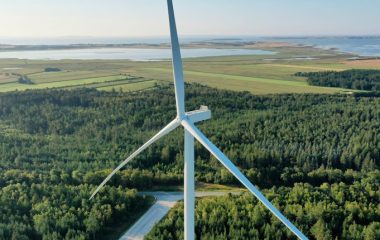
Photo: Last Energy
Prime Minister Nicolae Ciucă said Washington DC–based Last Energy would conduct a demonstrator project in Romania in cooperation with domestic scientific institutions, with the possibility to scale up the deployment of its small modular nuclear reactor (SMR) technology.
Two weeks ago, after Russia invaded Ukraine, Romanian President Klaus Iohannis announced a strategic turn to renewables and nuclear power. Hit by the energy crisis, the European Union decided earlier to include nuclear energy in its sustainable finance taxonomy. According to an agreement signed in November, Romania is planning to deploy a so-called small modular reactor or SMR of 462 MW, which should be built by NuScale Power from the United States by 2028.
Now another US company is looking to implement its SMR technology in the country. Prime Minister Nicolae Ciucă met with representatives of Washington DC–based Last Energy and said it could build a mini nuclear reactor in Romania.
The demonstrator project is planned to be implemented in Mioveni, where fuel is produced for the Cernavodă nuclear power plant
First, the startup is set to complete a demonstrator project for its technology in cooperation with the Institute for Nuclear Research in Pitești within two years, he revealed. The endeavor would be conducted together with the Autonomous Directorate of Nuclear Energy Technologies (RATEN) in Mioveni near the same city, according to Ciucă, where fuel is produced for Romania’s Cernavodă nuclear power plant.
Depending on the results, the project could be scaled up to contribute to the energy independence goal, the prime minister added. Last Energy is developing solutions for water-cooled SMRs with a capacity of 20 MW that produce electricity, heat and process steam.
Nuclear power can be used to produce hydrogen through electrolysis
The company suggests its mini nuclear plants can be built next to energy-intensive facilities to reduce costs of infrastructure and transmission. The heat and electricity from an SMR can also be used to produce hydrogen via water electrolysis, Last Energy said.
When the process is powered by nuclear energy, it is called pink hydrogen. It is green hydrogen if electricity from renewables is used. Gray hydrogen is produced from gas, but it is called blue hydrogen if carbon dioxide emissions are captured and then stored or used for a different industrial purpose.
The Autonomous Directorate of Nuclear Energy Technologies is involved in other projects as well
In November, Ansaldo Nucleare and Reinvent Energy were awarded EUR 20 million for the design, procurement, installation and commissioning of a research facility for the development of lead-cooled reactors with RATEN.
The system is called Athena (Advanced Thermo-Hydraulics Experiment for Nuclear Application). It is part of the Advanced Lead-cooled Fast Reactor European Demonstrator (Alfred) project there, worth EUR 1 billion. The ambition is to eventually build an industrial demonstration unit of 300 MW to 400MW.









Be the first one to comment on this article.